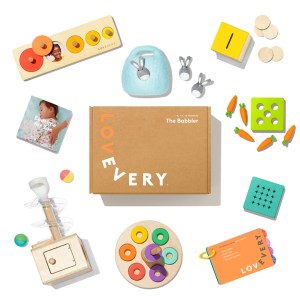How to pre-wire your child’s brain for reading

Has your child ever flipped a book that was upside-down, remembered a favourite phrase, or called you out when you skipped a page? That’s because even as early as two, they’re starting to understand how books work. By 28 months, for example, your child might have started to understand that you’re actually reading the words—not the pictures—on each page. Your child is likely exhibiting a wide range of pre-reading behaviours, which you can help develop.
Here are some strategies to nurture your budding reader by encouraging “print motivation”.
In simple terms, print motivation is a child’s interest in and enjoyment of books and reading–it really boils down to the beginnings of intellectual curiosity. So many kids get to school and resist reading. It takes a lot of persistence to learn how to read, and cultivating print motivation helps them persevere.
Here’s how:
- Let them pick out their books at the library—even if they’re the ones you hate reading, the level seems wrong, or you don’t think you will ever get through them all. If it’s a book, it counts.
- Read the same book over and over again. If you can handle reading their favourite book to them for the 200th time, research shows that repetitive reading increases enjoyment, pattern recognition, and confidence.
- Make sure there are always appealing books stored low to the ground, so your child can reach them.
- Reading isn’t just for bedtime. Having books around the house, in your car, and your diaper bag helps show your child that reading is an anytime activity. You can read books at bath time, in waiting rooms, and in transit. Right after a nap or in the morning when your child wakes up can be a good time to read because they might be more calm and receptive.

- If your child is squirming off your lap and doesn’t seem to have the attention span for reading, try mixing it up: give them a toy to fiddle with or read to them while they are playing on the floor. Research shows that they are still benefiting from being read to, even if it doesn’t seem like you have their full attention.
- Help your child notice the “environmental print” on street signs, food packages, billboards, clothing, and home addresses. Point these out and read them when you can.

The Play Kits
The Play Kits by Lovevery are thoroughly tested, baby safe, eco-friendly and Montessori inspired. Give your child the best start with our stage-based play toy subscription boxes.
Learn morePosted in: 25 - 27 Months, Books, Language, Literacy, Child Development
Keep reading

22 - 24 Months
25 - 27 Months
28 - 30 Months
31 - 33 Months
34 - 36 Months
Our favourite birthday and holiday gift ideas for 2-year-olds
These fun gift ideas for 2-year-olds support their motor skills, independence, and creativity.

19 - 21 Months
22 - 24 Months
25 - 27 Months
28 - 30 Months
31 - 33 Months
34 - 36 Months
What kind of chores are right for my child?
Children as young as 18 months can start taking on regular household responsibilities. These will be simple and straightforward, like wiping up spills or helping set the table, and will require modeling and patience from you.

25 - 27 Months
DIY spice paints, nature soup, and more ways to explore smell
Many sensory activities focus on texture, temperature and other tactile properties. Try these ways to incorporate smell into your two-year-old’s sensory play.
